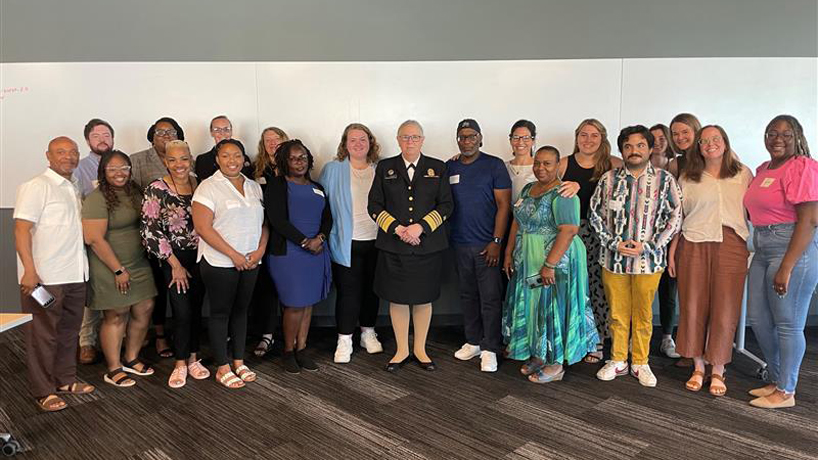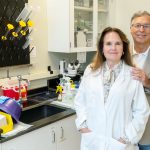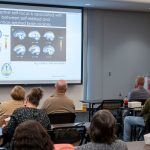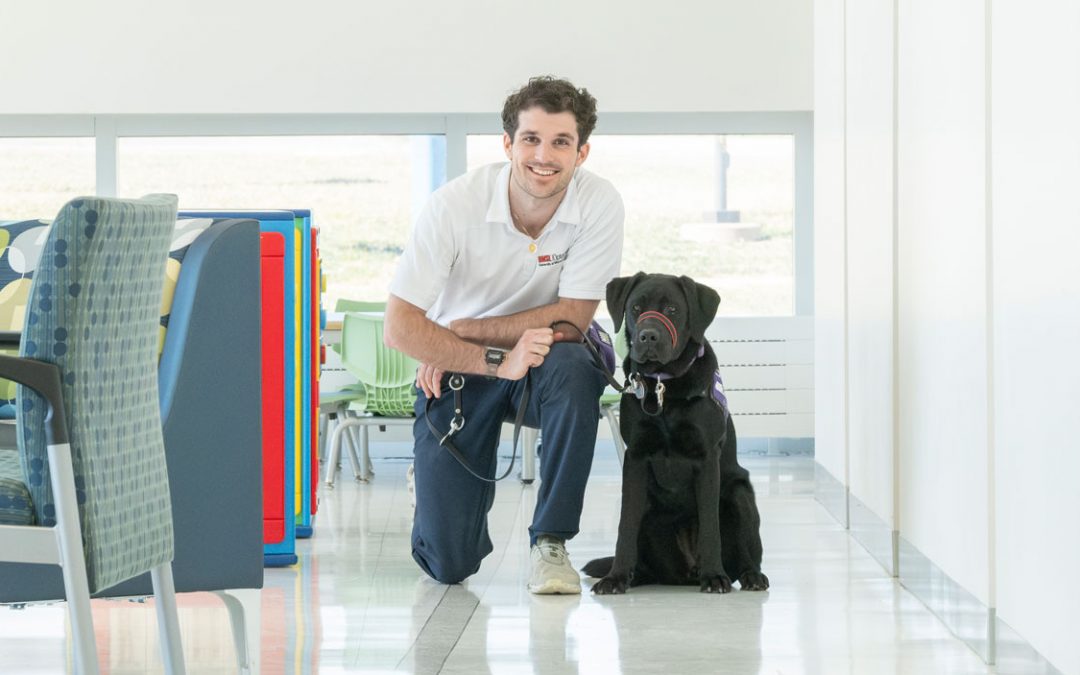
Members of the UMSL Addiction Science Team and their community partners welcome Assistant HHS Secretary Admiral Rachel Levine for a roundtable discussion on Saturday morning at the Cortex Innovation Community. (Photo courtesy of Rachel Winograd)
Members of the University of Missouri–St. Louis Addiction Science Team joined with community partners, including the St. Louis Housing Authority, to host a roundtable discussion Saturday morning with Assistant Secretary for Health Admiral Rachel Levine.
They discussed ways to increase access to naloxone to reverse overdose for people impacted by addiction in low-income housing.
Officials from both the U.S. Department of Health and Human Services and the Department of Housing and Urban Development, including HUD Regional Administrator Ulysses “Deke” Clayborn and HHS Regional Director Joseph Palm, attended the event, which was held in the Collab space at the Cortex Innovation Community as well as virtually.
That site in Cortex is only about two blocks away from the site of deadliest mass overdose event in St. Louis history, which occurred last year when a total of 11 people overdosed on fentanyl-tainted crack cocaine, resulting in nine deaths, between Feb. 5 and Feb. 7, 2022, at Parkview Apartments and nearby Park Place Apartments on Forest Park Avenue.
Rachel Winograd, who leads UMSL’s Addiction Science Team as an associate professor in UMSL’s Department of Psychological Sciences and the Missouri Institute of Mental Health, joined community partners in highlighting ongoing work being done to supply Parkview Apartments with harm reduction resources, including naloxone.
“You’re serving as a fantastic pilot for the distribution and administration of naloxone in public housing to save lives,” said Levine, who serves as the head of the U.S. Public Health Service Commissioned Corps, one of the eight uniformed services. “So, congratulations on your work and your success and your dedication. We would like to expand this, and I had actually mentioned to Mr. Clayborn and Mr. Palm when I was visiting Kansas City a number of weeks ago that this would be an interesting idea. I think the next step would be to have a meeting with HHS, our regional offices, but HHS in Washington and HUD in Washington, and our regional partners – Mr. Palm, Mr. Clayborn and others from SAMHSA – and see how we can expand this.”
Levine noted the financial resources currently available to states as they try to combat the overdose crisis, and she said she’d like to see increased distribution of naloxone.
Drug-related public housing policies and regulations have in the past made it more difficult to provide naloxone and others life-saving harm reduction services to residents, but Clayborn made clear those policies are aimed at illegal drugs.
“I just want to make this clear that naloxone is not an illegal drug, and the use of naloxone is not prohibited on the grounds of public housing agencies or any HUD-assisted housing,” Clayborn. “This life saving intervention is not prohibited. Public housing agencies are not prohibited from having naloxone on public housing grounds or facilitating the availability for public and assisted residents, and the use of naloxone by residents may not be used as a basis for termination. In the coming weeks, HUD will be issuing guidance to clarify these three points.”
Clayborn’s words were welcome to Winograd, who serves as the director Missouri Opioid State Targeted Response project.
“My sense from the attendees here today is that we look forward to more coming from federal officials and partners, in terms of providing more services – maybe co-located services, easier access and navigation to the services that already exist, lower barrier access to life-saving interventions for people who use drugs – given that we have a long way to go to reduce preventable deaths from overdose,” Winograd said.
She expressed thanks for Levine and others for coming to St. Louis to highlight the need to reduce barriers to naloxone.
As Levine outlined, that is only one part of what must be done to adequately address a crisis that has claimed the lives of more than 1 million people from overdose over the past 25 years.
“We have an enormous challenge,” Levine said. “I agree in terms of the importance of harm reduction efforts. We need to continue with the prevention efforts. We need to continue with treatment efforts, particularly medication for opioid use disorders such as as buprenorphine or Suboxone is one brand, and then we need more and more recovery efforts.
“Just doing drug control efforts by itself is absolutely necessary, but it’s not sufficient. We have to deal with the social determinants of health. We have to deal with housing, we have to deal with transportation, we have to deal with economic opportunity. It all fits together.”














